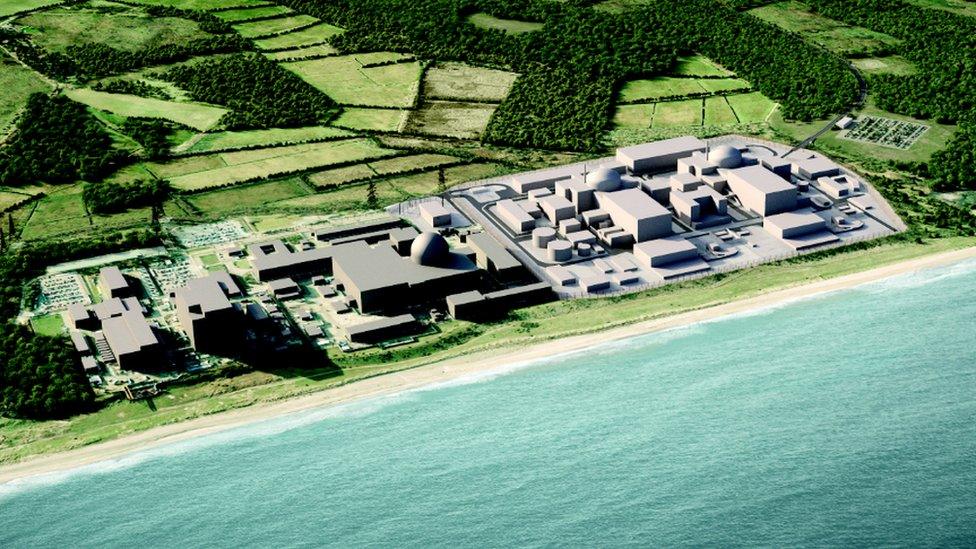Sizewell C: What is it and where is it planned to be?
- Published

Sizewell C, on the right, would be built next to Sizewell B, centre, which is still generating, and Sizewell A, far left, which operated until 2006 and is being decommissioned
Campaigners are taking their battle against a new nuclear reactor in Suffolk to the Court of Appeal in the latest instalment of the long-running project. What are the arguments for and against Sizewell C?

What is Sizewell C?
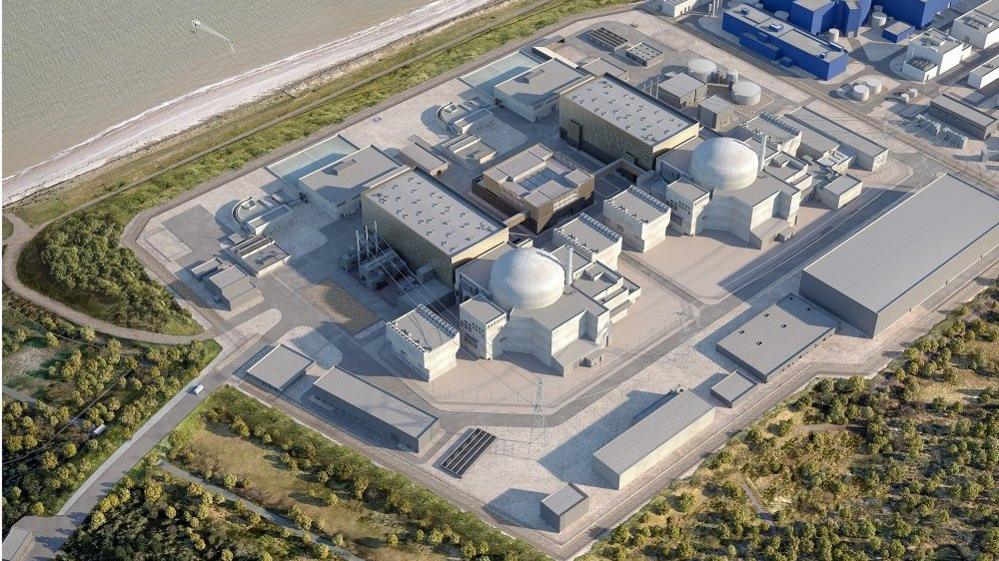
The planned plant is expected to cost about £20bn
French energy company EDF wants to build a two-reactor nuclear power station which it says will generate 3.2 gigawatts (GW) of electricity, enough to provide 7% of the UK's needs, at Sizewell in Suffolk.
It claims Sizewell C could power the equivalent of about six million homes and will generate electricity for 60 years.
When work goes ahead, it is expected to take about nine years to build.
The planned plant is expected to cost about £20bn - slightly less than the plant currently under construction at Hinkley Point, in Somerset, because Sizewell C will be a near-identical replica which saves on costs.
In August, the government pledged another £341m to speed up preparations for Sizewell C's construction, external.
In total, the government has now earmarked more than £1bn for the project, building on its existing £870m stake as part of its plan to rapidly expand the UK's nuclear energy sector.
The nuclear project could be the first to use the government's introduced RAB (Regulated Asset Base) model, external.
The model has already been used to finance some large infrastructure projects, including the £4.2bn Thames Tideway "super-sewer", external.
Earlier this year, Parliament passed the Nuclear Energy (Financing) Act, allowing the government to use RAB to contribute towards the initial construction costs of a big nuclear project.
The proposals include making electricity customers pay for part of the costs of new nuclear schemes through bills and the model allows investors to receive returns before the projects have been completed.
The Nuclear Industry Association said it would add a small levy to bills of no more than a few pounds during the early phase of construction and less than £1 a month over the course of a project.
The government says "over the 60-year lifetime of a generic new large-scale nuclear power station, our funding model could reduce the project cost by more than £30bn".
A contract with French energy firm EDF was signed last November, with former Business Secretary Grant Shapps visiting Sizewell to mark the government's £700m investment deal.
It followed a summer visit by the then Prime Minister Boris Johnson to announce the agreement, signalling the government becoming a 50% shareholder in the project's development with EDF.
Mr Shapps confirmed the deal meant the government had bought out China General Nuclear.
The state-owned Chinese nuclear power company was "no longer involved" in the plans, he said.
The government has since announced private investment was needed, external to help fund the build, opening a process for investors to express interest.
It said any possible partners would face "strict national security checks".

Where will Sizewell C be built?

Sizewell C would be built just south of RSPB Minsmere
The new plant is earmarked for the hamlet of Sizewell which sits on the Suffolk coast between Aldeburgh and Southwold.
The village is already home to two separate power stations - the decommissioned Magnox Sizewell A and pressurised water reactor (PWR) Sizewell B.
The first nuclear plant - Sizewell A - opened in 1967 and Sizewell B began operating in 1995.
While about 5,500 people live in the Leiston area, it is understood fewer than 100 live in Sizewell itself.
Sizewell is hemmed in with every kind of protected area.
The whole coast is an Area of Outstanding Natural Beauty (AONB) and the shingle beach is a Site of Special Scientific Interest (SSSI).
Sizewell Marshes, just behind the plant, is a Special Protected Area (SPA), and the Leiston Sandlings to the south is another SPA.
RSPB Minsmere, which provides reedbed, wet grassland and heath habitats for a variety of wildlife including wading birds, marsh harriers, otters, water voles and bearded tits, lies just north of the site.
Building the new power station would involve turning a large swathe of wood, marsh and grassland into a temporary construction site, housing a 1,000-space car and bus park and a 2,400-bed worker campus.
The temporary construction site, says EDF, will eventually be returned to a natural environment.

What does the government say about Sizewell C?

Prime Minster Rishi Sunak said the government was committed to building Sizewell C
Sizewell C is a key part of the new UK energy strategy and will house two of the world's most powerful reactors, according to the government.
It launched a body, called Great British Nuclear, external, to support new projects with the hope that by 2050 up to 24 GW of electricity will come from that source - 25% of the projected electricity demand.
Its aim is to reduce the UK's dependence on fossil fuels and energy imports.
At the peak of construction, Sizewell C is expected to create about 10,000 jobs nationally.
While fears have been raised about a lack of investors for Sizewell C, Prime Minister Rishi Sunak told the BBC in September he was still confident about the project.
"We're talking to business now and we've had quite strong early interest from people who want to invest," he said.
He also said the government remained committed to building the site despite smaller and cheaper power stations available on the market.
"That's technology that's proven - gigawatt power stations are proven technology," said Mr Sunak.
"We know they work."
Sizewell C was given the green light in July 2022 by former Business Secretary Kwasi Kwarteng.

What is the local reaction?
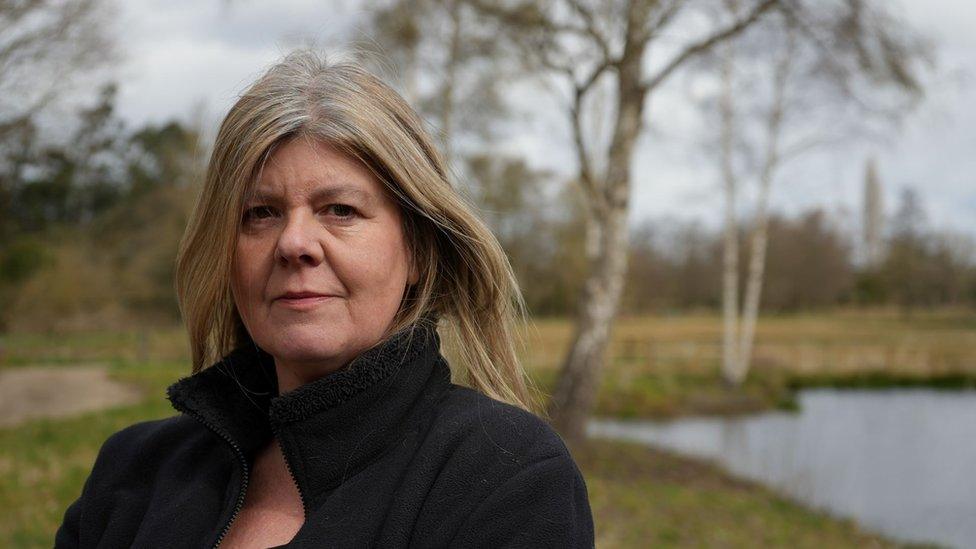
Alison Downes, from the Stop Sizewell C campaign group, says it is the "wrong project, wrong place"
Some Suffolk business groups have welcomed the jobs and skills that would be brought to the local economy, but there is significant opposition to the plant both at a local level and more widely.
It includes a group of campaigners being embroiled in the latest stage of a legal battle in the Court of Appeal against the government.
Together Against Sizewell C argues the government failed to assess the environmental impact - and, in particular, the lack of a permanent water supply of two million litres per day for the site - when granting planning permission.
A High Court judge dismissed the group's challenge earlier this year, but the Court of Appeal overturned this ruling.
The case will finish being heard on Thursday, but the result is not due for some time.
Further criticism has been levelled at the proposal, when this summer the science and technology committee of MPs questioned if it offered value for money, with the funding model displaying "significant uncertainties and downsides".
Campaigners fear the planning decision will be politically driven because of the government's new targets of 24GW of nuclear power.
They say Sizewell is the "most environmentally sensitive" of possible nuclear sites and the potential impacts on marsh harriers may mean ministers rely on "Imperative Reasons of Overriding Public Interest" (IROPI) to justify giving consent to the plant.
Anti-nuclear power campaigners have also argued Sizewell C will be too slow and expensive to build to "urgently and efficiently meet decarbonisation targets".
They have said the government's impact assessment, published with the Nuclear Energy (Financing) Bill, for a notional power station, contains cost ranges of £26.3bn to £42.8bn with construction times of 13 to 17 years.
The group says the type of reactor EDF wants to build has an "appalling track record".
Hinkley C - the newest of the UK's planned nuclear power stations - is already expected to be 30% over budget at £22-26bn, and is behind schedule.
Campaigners have also highlighted technology failures at other power stations, including a leak in a fuel rod housing at the Taishan plant in China.
They also dismissed claims that the nuclear power was "home grown", saying that the design, developers and operators would all be "foreign".

Follow East of England news on Facebook, external, Instagram, external and X, external. Got a story? Email eastofenglandnews@bbc.co.uk, external or WhatsApp us on 0800 169 1830
- Published18 September 2023
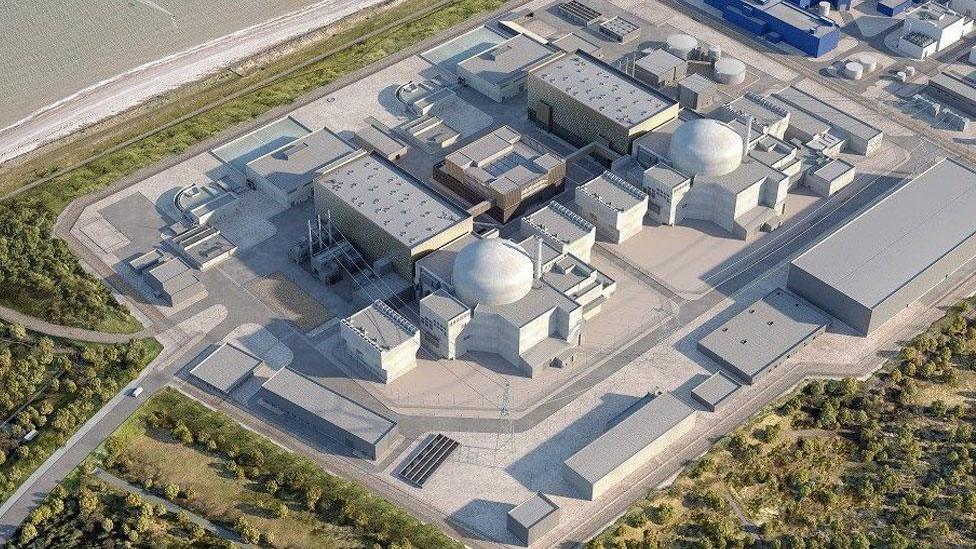
- Published31 July 2023
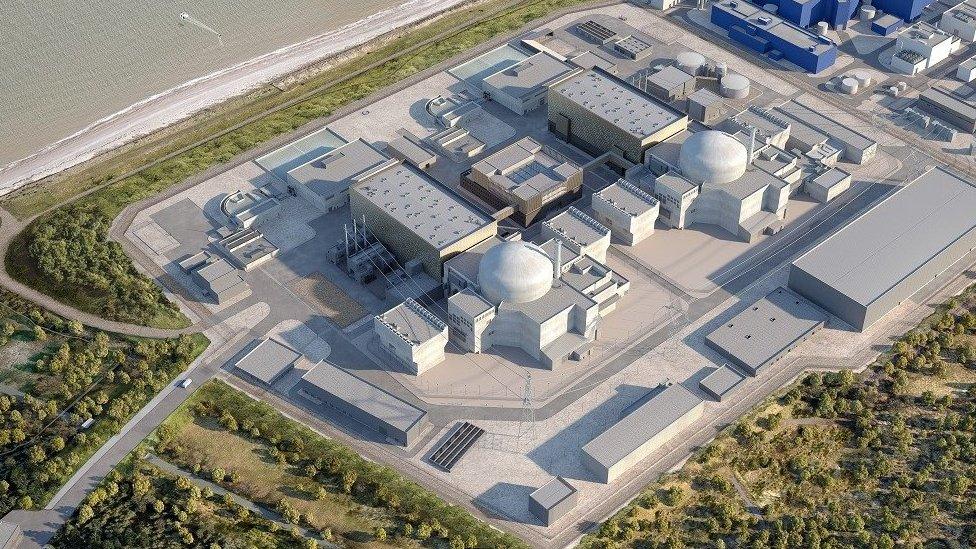
- Published29 November 2022
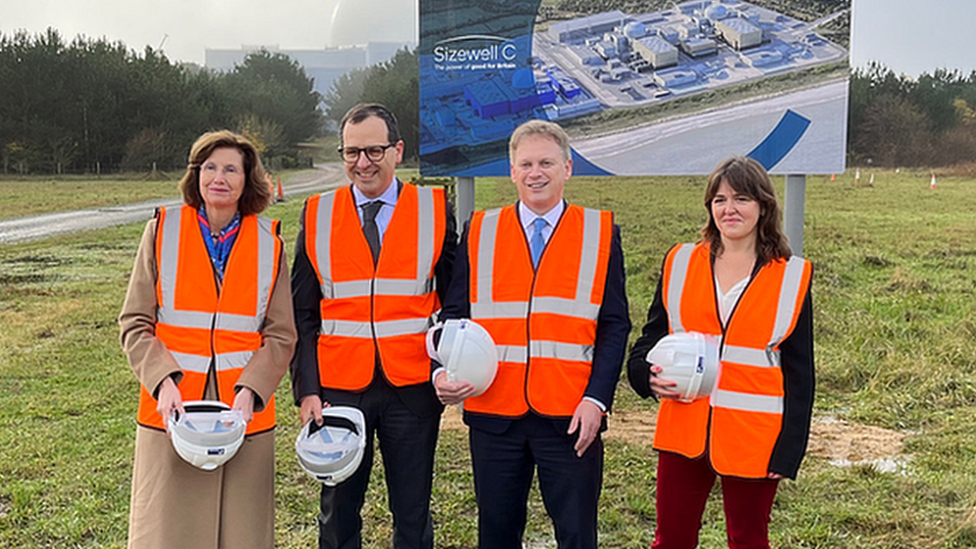
- Published20 July 2022

- Published15 June 2022

- Published27 March 2022
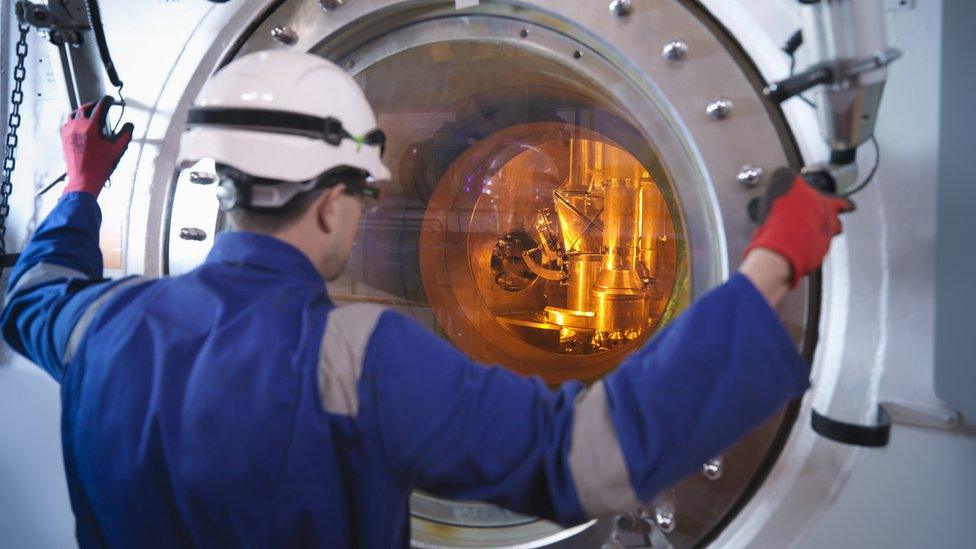
- Published27 January 2022

- Published29 December 2021
